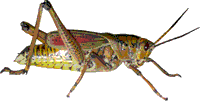Entomology Collections, General

Entomology Papers from Other Sources
Document Type
Article
Date of this Version
2008
Abstract
Numerous recent studies have tested the effects of plant, pollinator, and predator diversity on primary productivity, pollination, and consumption, respectively. Many have shown a positive relationship, particularly in controlled experiments, but variability in results has emphasized the context-dependency of these relationships. Complementary resource use may lead to a positive relationship between diversity and these processes, but only when a diverse array of niches is available to be partitioned among species. Therefore, the slope of the diversity-function relationship may change across differing levels of heterogeneity, but empirical evaluations of this pattern are lacking. Here we examine three important functions/properties in different real world (i.e., nonexperimental) ecosystems: plant biomass in German grasslands, parasitism rates across five habitat types in coastal Ecuador, and coffee pollination in agroforestry systems in Indonesia. We use general linear and structural equation modeling to demonstrate that the effect of diversity on these processes is context dependent, such that the slope of this relationship increases in environments where limiting resources (soil nutrients, host insects, and coffee flowers, respectively) are spatially heterogeneous. These real world patterns, combined with previous experiments, suggest that biodiversity may have its greatest impact on the functioning of diverse, naturally heterogeneous ecosystems.


Comments
Published in PLoS Biology 6(5): e122. doi:10.1371/journal.pbio.0060122